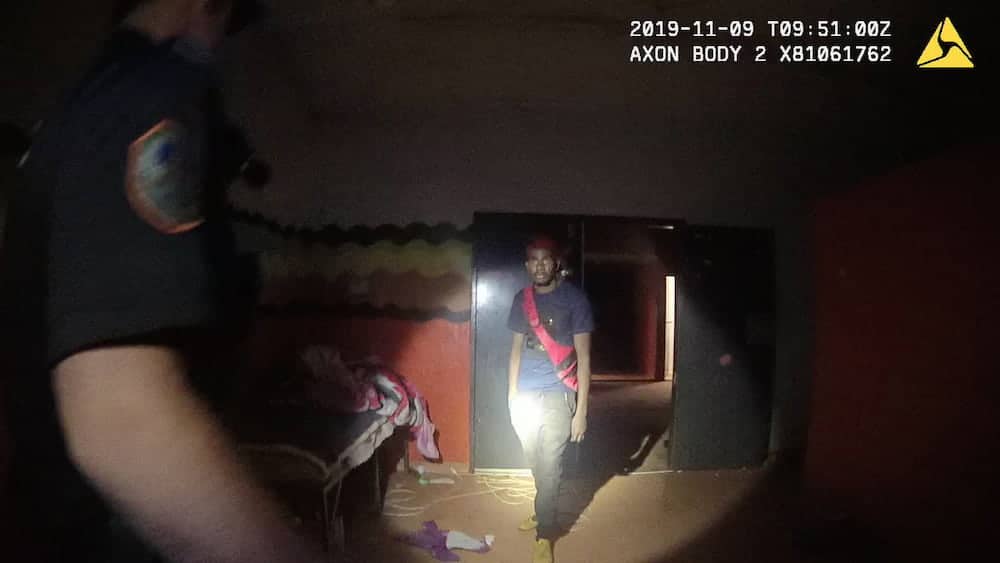A murder-accused policeman should not have entered the dark room where he fatally shot an Aboriginal teenager during an outback arrest attempt, a jury has heard.
Constable Zachary Rolfe, 30, has pleaded not guilty to murdering Kumanjayi Walker, 19, after the teen stabbed him with scissors on November 9, 2019.
Rolfe fired three shots into Mr Walker’s back and torso as he resisted arrest inside his grandmother’s home in Yuendumu, 290km northwest of Alice Springs.
Expert witness Detective Senior Sergeant Andrew Barram reviewed Rolfe’s body-worn camera video and says he should have ordered the teen to show his hands from the doorway into the house when he first came into view.
“That provides you with time, distance and cover, rather that putting yourself into the room with a potentially armed offender,” he told the Northern Territory Supreme Court in Darwin on Monday.
“They should not have gone (into the house) if they suspected it was Mr Walker.
“He is clearly a high-risk offender with a propensity to previously arm himself.”
The former officer-in-charge of the NT Police operational safety section also said Rolfe and his partner Sergeant Adam Eberl, then a constable, should not have allowed the teen to get so close.
“The first thing that is immediately apparent when Mr Walker comes into view is that he has got his hand in his pocket,” Det Sen Sgt Barram said.
“They have put themselves in close proximity to someone that they suspect was armed.”
Asked if Rolfe and Sgt Eberl had put themselves in danger by their actions, Det Sen Sgt Barram said: “Yes, they did”.
“No distance between them. Limited time to be able to react. Completely goes against our training.”
“It is all about not rushing in.”
He also told the court Rolfe had disengaged two of three safety retention devices and the hood of his pistol’s holster in the minutes before he shot Mr Walker.
Asked what that indicates, Det Sen Sgt Barram said: “That there is a readiness to use a firearm”.
He said Rolfe did not need to disengage the devices at a house near the home where he later found Mr Walker.
“They were tasked to gather intel about where Mr Walker might spend the night,” he said.
“They had gained that before they had gone into the (first) house.”
Det Sen Sgt Barram said NT police were trained to “calm a situation or bring it down from a high level of threat to a lower level or no level of threat”.
“Time is on our side so we utilise time to try coming up with a less forceful option than rushing in and perhaps causing an incident that does not need to happen,” he said.
He said officers were taught multiple technics, including verbal commands, negotiation and presenting a Taser, baton or pepper spray.
They are also told to “stop and step back for a moment. Assess and reassess. Do you really need to go in there?”
Rolfe and three other officers were sent to the remote Indigenous community to assist local officers with general policing duties.
They were also ordered to arrest Mr Walker at 5.30am on November 10 when he was likely to be sleeping and easily taken into custody.
Instead, they found the teen about 15 minutes after leaving the local police station where the officer-in-charge Sergeant Julie Frost has said she handed the men a printed page outlining the arrest plan.
Rolfe walked into a dark room and shot Mr Walker about a minute later. The second fatal shot ripped through the teen’s spleen, lung, liver and a kidney.
The Crown says the team was “intent” on finding Mr Walker after watching a video of him violently threatening two other policemen with an axe on November 6.
It has conceded the first shot, fired while Mr Walker was standing and wrestling with Sgt Eberl, was justified.
But it says the second and third shots, which are the subject of the murder charge, went “too far”.
The trial continues on Tuesday.
Get all the latest Canberra news, sport, entertainment, lifestyle, competitions and more delivered straight to your inbox with the Canberra Daily Daily Newsletter. Sign up here.



